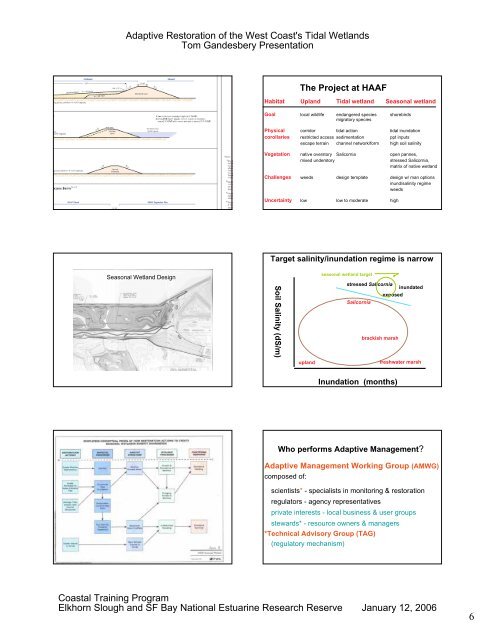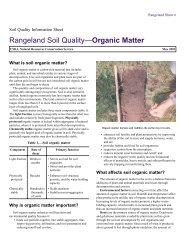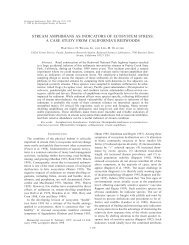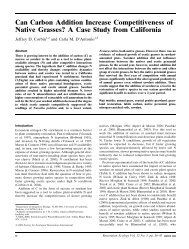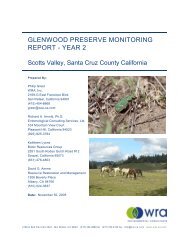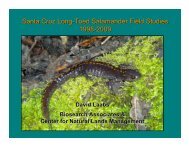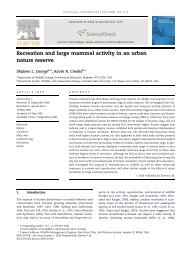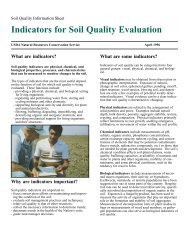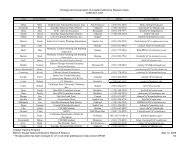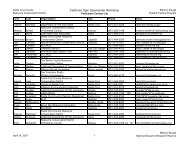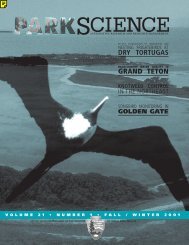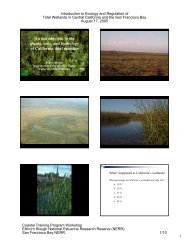hamilton wetland restoration project - the Elkhorn Slough Coastal ...
hamilton wetland restoration project - the Elkhorn Slough Coastal ...
hamilton wetland restoration project - the Elkhorn Slough Coastal ...
Create successful ePaper yourself
Turn your PDF publications into a flip-book with our unique Google optimized e-Paper software.
Adaptive Restoration of <strong>the</strong> West Coast's Tidal WetlandsTom Gandesbery PresentationSite is subsided show crosssectThe Project at HAAFHabitat Upland Tidal <strong>wetland</strong> Seasonal <strong>wetland</strong>Goal local wildlife endangered species shorebirdsmigratory speciesPhysical corridor tidal action tidal inundationcorollaries restricted access sedimentation ppt inputsescape terrain channel network/form high soil salinityVegetation native overstory Salicornia open pannes,mixed understorystressed Salicornia,matrix of native <strong>wetland</strong>Challenges weeds design template design w/ man optionsinund/salinity regimeweedsUncertainty low low to moderate highTarget salinity/inundation regime is narrowSeasonal Wetland DesignSoil Salinity (dS/m)uplandseasonal <strong>wetland</strong> targetstressed SalicorniainundatedexposedSalicorniabrackish marshfreshwater marshInundation (months)Who performs Adaptive Management?Adaptive Management Working Group (AMWG)composed of:scientists* - specialists in monitoring & <strong>restoration</strong>regulators - agency representativesprivate interests - local business & user groupsstewards* - resource owners & managers*Technical Advisory Group (TAG)(regulatory mechanism)<strong>Coastal</strong> Training Program<strong>Elkhorn</strong> <strong>Slough</strong> and SF Bay National Estuarine Research Reserve January 12, 20066


